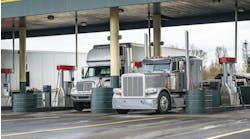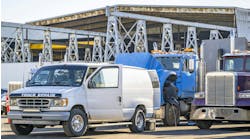In our work on electric vehicles, one conclusion we have reached is that success is going to take collaboration among all of the stakeholders — truck makers, battery suppliers, fleets, utilities, governments, non-government organizations, etc.
In our Guidance Report, Amping Up: Charging Infrastructure For Electric Trucks, we developed a charging procurement roadmap. The first step in that roadmap was that fleets engage their local utility provider to evaluate existing infrastructure, and step three was to work with them to determine charging needs.
We put the onus on the fleet to make the contact with their electric service provider. And, in fact, throughout the rest of the roadmap we suggest to fleet owners and managers the action they need to take to successfully implement an electric vehicle charging system.
Of course, the primary audience for the work we do is fleets, so it makes sense that our roadmap would be directed at them. But I have both surprised and pleased that we are seeing a great deal of interest on the part of the utilities to learn more about trucking and electric trucks.
Either at meetings — when such things were not considered a health hazard — or through other efforts like our newsletter, we are getting associations of electric companies that want to meet with us, are downloading our Guidance Reports on electric vehicles or want us to speak to their members so they can better understand the role of electric vehicles in trucking.
The list is pretty impressive:
- Edison Electric Institute:An association that represents all U.S. investor-owned electric companies. Its members provide electricity for 220 million Americans.
- American Public Power Association: The service organization for the more than 2,000 U.S. community-owned electric utilities that serve more than 49 million Americans.
- National Rural Electric Cooperative Association: The organization represents the interests of over 900 electric cooperatives in the United States.
- Electric Power Research Institute: An independent, nonprofit organization that conducts research and development related to the generation, delivery, and use of electricity to help address challenges in electricity.
- Smart Electric Power Alliance: Helps electric stakeholders find solutions and strategies for their unique clean and modern energy challenges.
Currently the biggest barrier to the successful deployment of commercial battery electric vehicles revolves on getting them charged in a timely and cost-effective manner.
The fact that organizations that represent electric utilities are interested in learning more bodes well for us working together to get an electric vehicle charging system in place which will help speed up the deployment of electric vehicles in commercial applications.
NACFE will continue to serve as a resource to these groups, but we encourage fleets and even manufacturers to contact your local utilities because they seem to be in the mood to learn as much as they can about the unique operation of commercial battery electric vehicles. Who better to tell them than people like you are entrenched in trucking where they best make sense?




